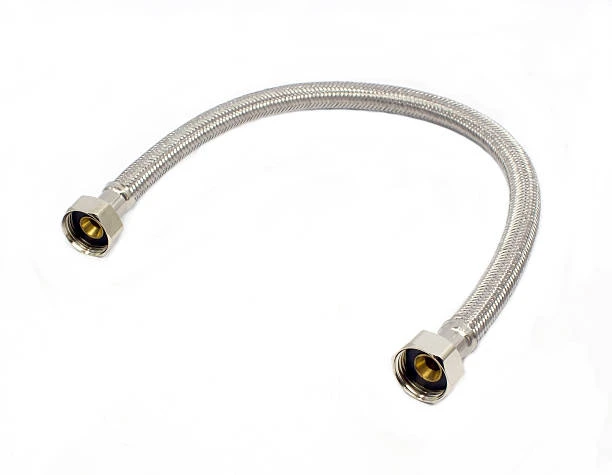
Reinforced braid hoses are critical components across industries, known for their durability and resistance to high pressure and extreme conditions. However, proper cleaning is essential to maintain their performance and extend their lifespan. Contaminants like dirt, chemicals, and debris can degrade the hose over time, leading to leaks or failures. This comprehensive guide explains what reinforced braid hoses are, their key features, common applications, best cleaning practices, and answers to frequently asked questions.
What Are Reinforced Braid Hoses? Key Features
Reinforced braid hoses consist of multiple layers designed for strength and flexibility. The core structure includes:
- Inner Tube: Typically made from rubber, PTFE, or thermoplastic, ensuring smooth fluid flow and chemical resistance.
- Reinforcement Layer: Braided metal (stainless steel, carbon steel) or synthetic fibers (aramid, polyester) for added durability.
- Outer Cover: Protects against abrasion, weather, and external damage.
Why Cleaning Matters:
✔ Prevents clogging and flow restrictions
✔ Extends hose lifespan by removing corrosive residues
✔ Maintains pressure integrity and prevents leaks
✔ Ensures safe operation in food, chemical, and medical applications
Common Uses & Industries Requiring Regular Cleaning
Reinforced braid hoses serve critical roles in various industries, many of which require frequent cleaning:
1. Food & Beverage Industry
- Dairy & beverage transfer: Milk, juices, and syrups can leave residue that promotes bacterial growth.
- Sanitary processing: Requires frequent sterilization to meet hygiene standards.
2. Chemical & Pharmaceutical
- Chemical transport: Residual substances can cause dangerous reactions if not properly flushed.
- Pharmaceutical fluids: Must be contaminant-free to ensure product purity.
3. Automotive & Hydraulics
- Fuel lines: Debris can clog injectors or damage engines.
- Hydraulic systems: Dirty fluid reduces efficiency and causes wear.
4. Oil & Gas
- Drilling mud & petroleum transfer: Sludge buildup can restrict flow and increase pressure risks.
5. Industrial Cleaning & Water Jetting
- High-pressure wash systems: Sediment and mineral deposits can weaken hoses over time.
Frequently Asked Questions (FAQ)
1. How often should I clean my reinforced braid hose?
It depends on usage. For food or chemical industries, cleaning after each use is ideal. For industrial or automotive applications, inspect and clean monthly or when performance drops.
2. What’s the best way to clean a braided hose?
Flush with water or a mild solvent first. For stubborn residues, use specialized cleaning solutions compatible with the hose material. Avoid harsh chemicals that may degrade rubber or PTFE.
3. Can I use a pressure washer to clean the exterior?
Yes, but avoid excessive pressure that could damage the outer cover. Focus on removing dirt without causing abrasion.
4. How do I know if my hose is clean enough?
Check for visible debris, odors, or residue. For sensitive applications (food/pharma), conduct swab tests or purity checks.
5. What happens if I don’t clean my hose regularly?
Clogs, reduced flow, bacterial growth (in food hoses), chemical corrosion, and premature failure can occur.
Step-by-Step Cleaning Process
To ensure thorough cleaning without damage:
- Flush with Water or Air – Remove loose debris by running water or compressed air through the hose.
- Use a Cleaning Solution – For oil or chemical residues, apply a compatible solvent (e.g., isopropyl alcohol for grease).
- Scrub if Necessary – For heavy buildup, use a soft brush on the interior (if accessible).
- Rinse Thoroughly – Ensure no cleaning agent remains inside.
- Dry Completely – Prevent mold or corrosion by air-drying before storage.
- Inspect for Damage – Look for cracks, leaks, or wear during cleaning.
Pro Tip: For food-grade hoses, use FDA-approved cleaners and sanitizers.
Conclusion
Reinforced braid hoses are built for toughness, but regular cleaning is key to maintaining their performance and safety. Whether used in food processing, chemical transport, or hydraulic systems, proper maintenance prevents clogs, contamination, and unexpected failures. By following the right cleaning methods and schedules, users can maximize hose lifespan and ensure efficient operations. Always refer to manufacturer guidelines for specific care instructions, and prioritize inspections to catch issues early.
Would you like any refinements or additional details on specific cleaning methods?
IFNS’s international standards
IFNS products comply with a wide range of international standards, including ASTM 2846, DIN 8079/8080, ASTM F441/F441M SCH80, GB/T 18993 series, AS/NZS 1477, CSA B137.6, NSF/ANSI 14, and TIS 17-2532/1131-2535. These certifications ensure that our pipes and fittings meet global quality, safety, and performance requirements.
Connect
IFNS, a Chinese manufacturer with 30 years of experience, specializes in high-quality plastic pipes, fittings, and valves. Interested in IFNS’s copper fittings, copper valves, plastic pipes, or fittings? Contact us today. IFNS offers a wide range of standard pipes tailored to your needs. Explore our affordable, cost-effective valve and piping system products.
We respond to emails or faxes within 24 hours. For immediate assistance, call us anytime with questions about our products.







